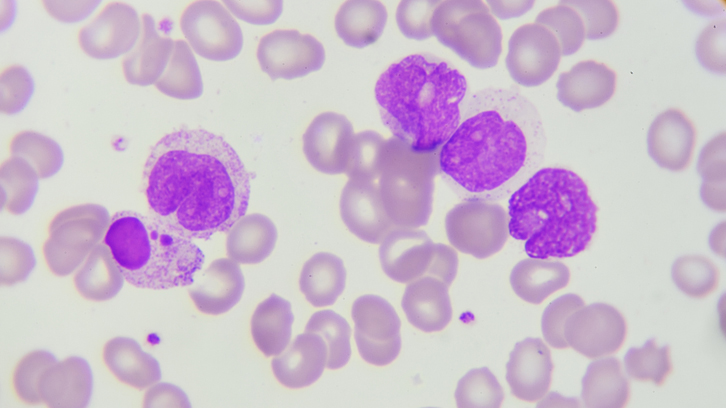Incidence of thromboembolism in patients with limphoproliferative disorders treated with lenalidomide

Lenalidomide is an antineoplastic agent commonly used for the treatment of myeloma. One of the most characteristic side effects is venous thromboembolism (VTE), i.e., development of a blood clot in the veins. Although in many cases VTE is not serious, it can be fatal due to migration of the blood clot from the veins to the pulmonary circulation. For this reason, VTE prophylaxis (with aspirin or anticoagulants) is recommended in patients with myeloma treated with immunomodulators such as lenalidomide or similar drugs.
More recently, lenalidomide has shown activity in multiple B-cell lymphoproliferative disorders. It is already approved for mantle cell lymphoma and in the future it will also be approved, at least, for follicular lymphoma. Since increased risk of VTE with lenalidomide is well established only in patients with myeloma, a disease with an inherent risk of VTE higher than that of most lymphoproliferative disorders, we carried out a systematic review of the incidence of VTE in patients with lymphoproliferative disorders treated with lenalidomide.
We selected prospective studies published in MEDLINE until September 2017 including patients with lymphoproliferative disorders treated with lenalidomide. The main exclusion criterion was the lack of data regarding VTE. Some studies provided data only on severe VTE (grade 3 or above over 5), so we analyzed incidence of "any VTE" and "severe VTE” separately. Importantly, the risk of bias of this systematic review was high due to the exclusion of studies that did not report all data needed for this analysis.
After the selection process, 60 publications (with 3043 patients) were left for the analysis of "severe VTE" and 46 (with 2244 patients) for "any VTE." Most studies were phase 2 trials for patients with chronic lymphocytic leukemia or aggressive B-cell lymphomas. Most studies required VTE prophylaxis.
Severe VTE occurred in 3.2% of patients and any VTE in 4.3%. Multiple subgroup analyzes did not reveal a population that was at a particularly higher risk than the main analysis.
Despite the absence of a control group, the incidence of VTE in these patients was not superior to that seen in some lymphoproliferative disorders treated with standard regimens, which seems to indicate that the risk of VTE associated with lenalidomide is lower in lymphoproliferative disorders than in myeloma. This can potentially be explained by the fact that patients with myeloma have other risk factors for VTE (immobility, treatment with high doses of corticosteroids, hyperviscosity associated with myeloma, etc.) that could act synergistically with lenalidomide. On the other hand, it should also be considered that the results of this review are limited by the characteristics of the included studies (most were early phase trials, which implies an important selection of patients, lack of control groups, etc.). Therefore, although the results of this systematic review seem to indicate that lenalidomide confers little additional thrombotic risk to patients with lymphoproliferative disorders, evidence obtained from larger, randomized studies and from clinical practice studies will be necessary to finally resolve this question.
ICO-Hospital Germans Trias i Pujol
Institut de Recerca Josep Carreras
Universitat Autònoma de Barcelona, Badalona
References
Sorigue, Marc & Orna, Elisa & Sancho, Juan-Manuel. (2018). Venous thromboembolism in patients with non-Hodgkin lymphoma or chronic lymphocytic leukemia treated with lenalidomide: a systematic review. Leukemia & Lymphoma, 59. 1-10. DOI: 10.1080/10428194.2018.1448085.


